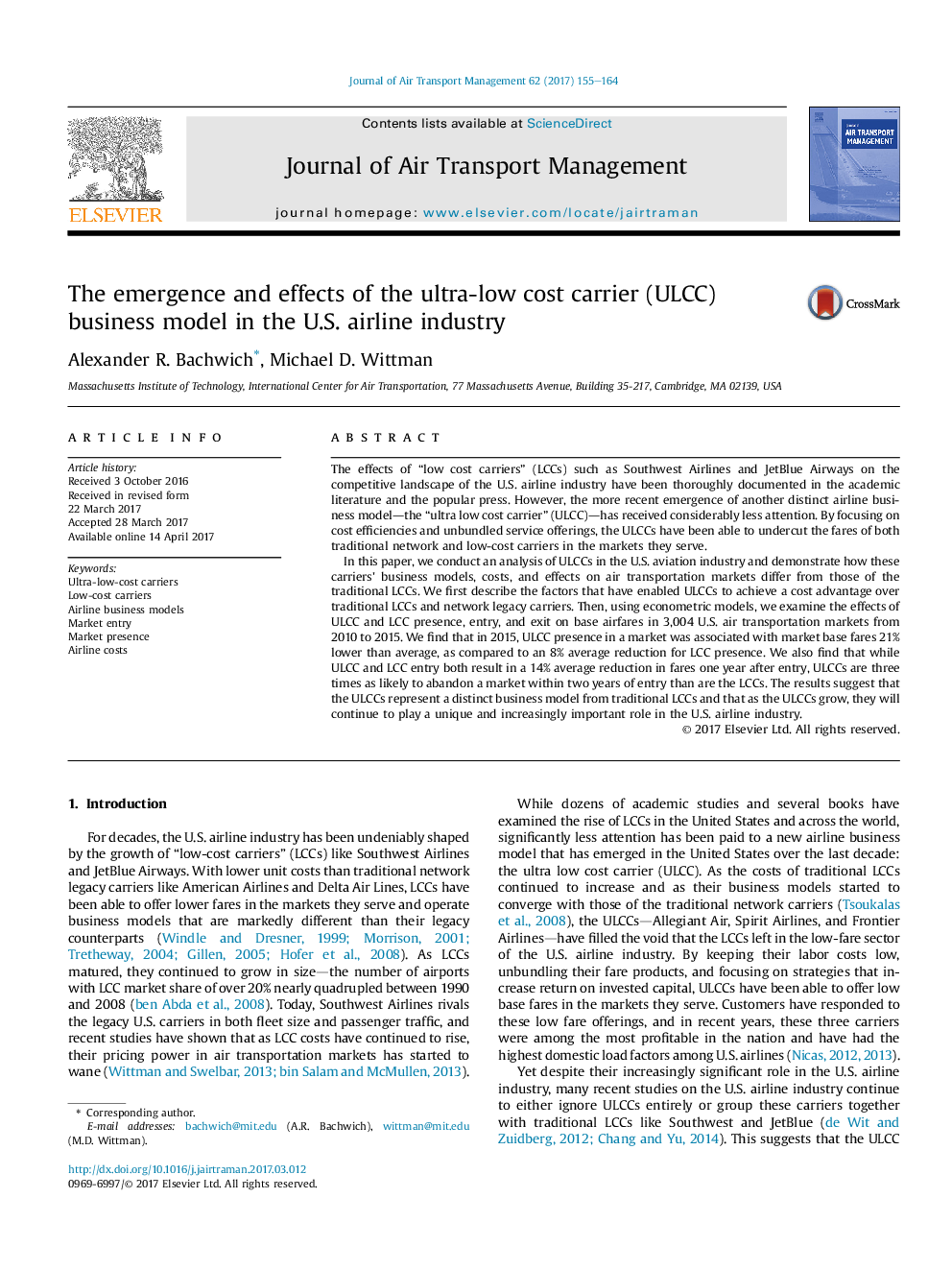| Article ID | Journal | Published Year | Pages | File Type |
|---|---|---|---|---|
| 5111473 | Journal of Air Transport Management | 2017 | 10 Pages |
Abstract
In this paper, we conduct an analysis of ULCCs in the U.S. aviation industry and demonstrate how these carriers' business models, costs, and effects on air transportation markets differ from those of the traditional LCCs. We first describe the factors that have enabled ULCCs to achieve a cost advantage over traditional LCCs and network legacy carriers. Then, using econometric models, we examine the effects of ULCC and LCC presence, entry, and exit on base airfares in 3,004 U.S. air transportation markets from 2010 to 2015. We find that in 2015, ULCC presence in a market was associated with market base fares 21% lower than average, as compared to an 8% average reduction for LCC presence. We also find that while ULCC and LCC entry both result in a 14% average reduction in fares one year after entry, ULCCs are three times as likely to abandon a market within two years of entry than are the LCCs. The results suggest that the ULCCs represent a distinct business model from traditional LCCs and that as the ULCCs grow, they will continue to play a unique and increasingly important role in the U.S. airline industry.
Related Topics
Social Sciences and Humanities
Business, Management and Accounting
Strategy and Management
Authors
Alexander R. Bachwich, Michael D. Wittman,
